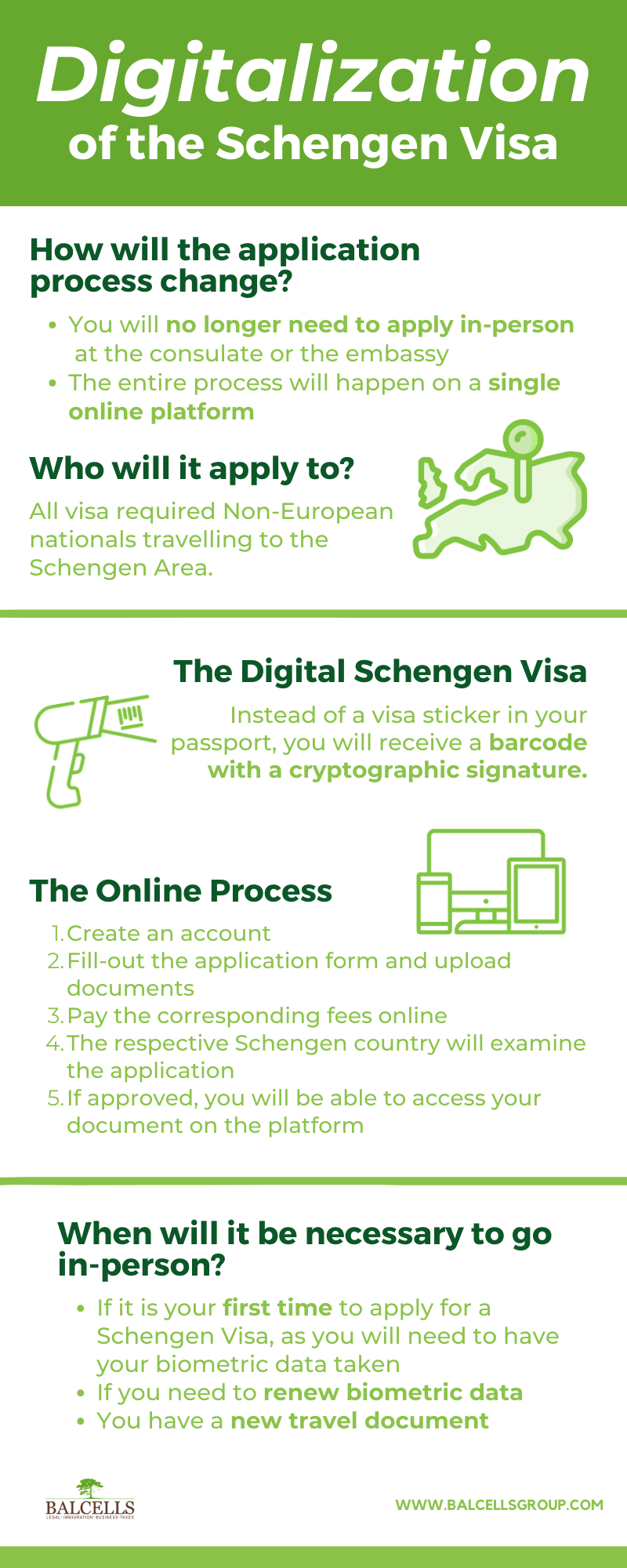If you are planning on traveling to Europe, most likely you will need a Schengen visa to enter this area. In this article we explore what exactly is this visa and how it works, its requirements, and most importantly: how to obtain it.
The European Council recently approved the digitalization of the Schengen visa application process, which means it will no longer be necessary to go to the embassy or consulate to obtain an EU tourist visa.
Let’s talk about what these changes mean, what the new process will look like, who exactly will be able to obtain her Schengen visa online, and when it will be implemented.
What is a Schengen visa?
A Schengen visa is a travel document that allows entry into the Schengen Area. This area includes 27 European countries with no internal borders. With a Schengen visa you can travel freely within these countries for up to 90 days within a 180-day period. You can learn more about this 90-day rule here.
This means that the Schengen visa is required for tourists, business travelers, or those visiting family in Spain (or in any other country of the Schengen area).
The Schengen visa simplifies travel by removing the need for separate visas for each country, so it’s your ticket to exploring Europe with ease and flexibility.
The question is, who exactly needs one? And how to obtain it?
Let’s explore the answers.
How will the Schengen Visa application process change?
Right now, the Schengen visa application process is a tedious and not quite agile process.
First, you make an appointment at the corresponding EU consulate in your country of origin; physically submit all requirements and necessary documents; wait for your application to be processed (which can take up to 45 days); pick-up or receive your passport with the tourist visa sticker inside; travel to Europe with this visa.
A long process that requires quite an effort from your side.
But this is about to change.
Through this digitalization, the European Commission will transform this entire application process into an online one.
Additionally, instead of the traditional tourist visa sticker placed inside the passport, the traveler will receive a cryptographically signed barcode. This will increase security by making it difficult to fake identities and/or documentation.
As globalization continues to expand, more and more people are traveling for tourism, business, and research. Digitalizing the visa application process will make travel and bureaucracy processes easier and faster.
As demand increases, processing everything online should be a more economical path for both the applicant and authorities.
Will tangible Schengen visas still exist?
Although the overall goal is to transition completely to digital visas, authorities have stated that travelers can still apply for printed Schengen visas under certain circumstances.
For example, if it is virtually impossible for the individual to apply for and obtain the visa digitally, or for humanitarian reasons.
That without mentioning the groups of foreigners who will still be obliged to apply for their Schengen visa, something we will explore in the next sections.
Before we talk about the new process and what it entails in detail, here’s an infographic to give you a quick summary:
Apply for a Schengen visa online
As we have mentioned, applying for a Schengen visa will soon be done online.
But, how?
Authorities will ensure that the online platform will be inclusive in terms of languages, disabilities, or Internet connection. It will be created and managed by the eu-LISA agency, while the European Commission will keep the visa information updated and accurate.
The online platform will allow you to apply and pay for the Schengen visa from the comfort of your own home, no matter which country you are in.
Personal data and necessary documents can be uploaded onto the platform, and, through it, you’ll receive updates on your application. Of course, data protection is guaranteed.
The platform will automatically identify the country in charge of reviewing your application based on the purpose and duration of the trip. It will also tell you what the necessary requirements and procedures are.
Let’s see the exact steps you will have to follow.
- Check if you actually need a visa. If you are unsure whether you need a visa to travel to the Schengen Zone, you can first and foremost check on the platform.
- Account creation. If you find that you do need a visa, you must create an account.
- Document upload. Once you have an account, you can then apply for the visa and upload the required documents. As we mentioned, the platform will automatically identify which member state is in charge of examining your application.
If you are granted the Schengen visa, you’ll have it on the platform as well.
Bear in mind that visa extension requests can also be made online.
Will this apply to all EU tourist visa applications?
Yes, this online application process will be applicable to all Schengen visa applications, regardless of your country of origin. As a non-European citizen, it won’t be necessary to go to the embassy or consulate in person, unless you fall under any of the three situations:
- It is the first time you are applying for an EU tourist visa. In this case, you’ll need to go to have your biometric data taken
- Your biometric data is no longer valid, so you’ll have to go to renew them
- You are traveling with a new travel document that you need to present
What if you don’t need a tourist visa to travel to the Schengen Zone?
If you don’t need a tourist visa to travel to the Schengen Zone, of course you will not have to apply for one on this platform. However, if you are from a non-European country that does not need a visa to travel to Spain, you will still need to apply for an ETIAS (European Travel Information and Authorisation System) travel authorization.
The ETIAS visa is meant to be fully digital, and, is also projected to be implemented around the same time as the digitalization of Schengen visas.
When will this digitalization be implemented?
The digitalization of the Schengen visa was implemented in 2025, and affects the 27 Schengen countries.
Book a consultation with one of our lawyers, and get answers to all your questions:
[/et_pb_text][/et_pb_column]
[/et_pb_row]
[/et_pb_section]

At Balcells Group we have been foreigners effortlessly moving to Spain for over 11 years. We help expats from all around the world with their immigration, business, tax and legal needs; ensuring a legally safe and enjoyable transition to the Spanish territory. Our multilingual team understands the importance of adapting to the cultural and legal specificities of our international clients. We offer a comprehensive service that combines the expertise of several generations of lawyers with the innovation needed to address today’s legal challenges, always striving to simplify processes and ensure reliable, effective results.




